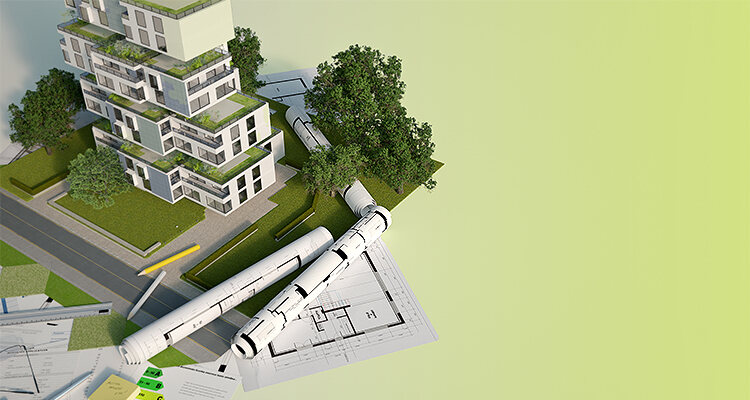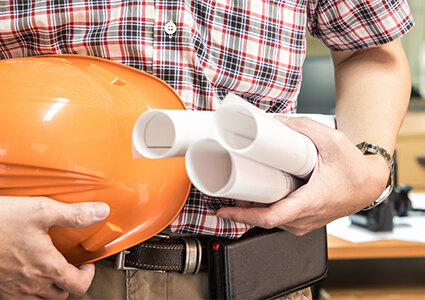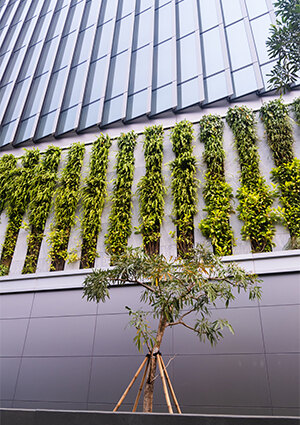
How net-zero architecture is transforming the construction industry
From residential property blocks to public schools and hospitals, commercial spaces, and more, the built environment is responsible for approximately 25 per cent of the UK’s greenhouse gas emissions. When accounting for total global carbon emissions, this figure reaches as high as 38 per cent. In the face of growing concerns surrounding climate change, individuals, companies, and governing bodies alike have committed to halving global emissions come 2030 – with the intention of eliminating them in their entirety by 2050.
 Despite these promising intentions, however, a change of this magnitude still requires a significant turning point in how the construction industry operates – with the ability to impact this change firmly placed in the hands of construction businesses, architects, and contractors. Sure, the sector is still a long way from achieving these goals, but it’s certainly moving in the right direction. From minimising wastage to innovative design features, and more, there is no shortage of solutions that are working towards a net-zero future, and Sarah Kauter has shared her insight into some of the most prominent.
Despite these promising intentions, however, a change of this magnitude still requires a significant turning point in how the construction industry operates – with the ability to impact this change firmly placed in the hands of construction businesses, architects, and contractors. Sure, the sector is still a long way from achieving these goals, but it’s certainly moving in the right direction. From minimising wastage to innovative design features, and more, there is no shortage of solutions that are working towards a net-zero future, and Sarah Kauter has shared her insight into some of the most prominent.
What is net-zero architecture?
To be classed as net-zero, a building must be able to counterbalance any emissions produced throughout its construction. Not only does this involve minimising the production of carbon dioxide throughout the construction phase of the building itself, but also balancing any excess emissions through new and innovative designs and sustainable technologies. To be truly carbon neutral, however, this must be embodied over the entire lifetime of the building, not just solely throughout its construction.
Architectural strategies to help our buildings reach net-zero: Efficient energy usage
Regardless of what sustainability-related features you’re looking to incorporate into your new project’s design, your first port of call should always be to ensure it’s running at optimal efficiency, and that the existing design is minimising unnecessary energy usage. In many cases, one of the most effective ways of doing this is by updating insulation within the walls, roof, and floors of a building. This reduces the need for what are typically non-renewably powered heaters, fans, and air conditioners. Other areas you should look towards include your windows, lighting, and draught proofing.
Optimal orientation
It’s easy to get wrapped up in the latest technologies, but if you aren’t doing the basics right, it’s all for nought. If you want to ensure they’re operating at maximum efficiency, for example, your building must be facing the right direction. For those with solar panels, this is southwards. You also want to consider optimising natural lighting, and taking advantage of shade from buildings, trees, and other natural features. With lighting accounting for approximately 17-to-20 per cent of a property’s total energy consumption, considering this within the design phase is crucial.
Renewable energy sources
Once you’ve ensured all this, you can then begin incorporating renewable technologies into the design of your building. Within the UK, solar panels are the most common – with the potential to save up to a tonne of carbon each year, and with an average pay-back period of around seven-to-ten years. They also don’t require direct sunlight to produce electricity. It’s no wonder they’re so popular in the UK!
Green roofs
Otherwise known as living roofs, these are essentially a roof which is either partially or entirely covered by a layer of vegetation. These architectural features filter carbon dioxide, gradually converting it into oxygen through photosynthesis and purifying the air. As the chlorophyll absorbs sunlight, green roofs also provide an additional barrier of heat retention for the building. When paired with solar panels, green roofs can increase the efficiency with which they operate, further reducing energy costs. For many net-zero-focused buildings, this could prove to be the final piece of the puzzle.
How can you benefit beyond solely net-zero’s environmental implications?
Whilst the primary objective of transitioning towards a net-zero economy should of course be its positive environmental impact, it doesn’t mean that businesses cannot benefit in other ways in the meantime. Predominantly, this comes down to being well-prepared for what the next few decades look to have in store. Where national and global bodies are beginning to become stricter in their commitments to achieving net-zero, businesses already incorporating net-zero practices into their work will be spared the time and costs that would otherwise be imposed upon them should they instead be sticking to their old ways.
Early adoption of sustainable practices and architectural features has the potential to offer significant competitive advantages both immediately, and within the coming years. By the time net-zero new builds become mandatory in 2030, those contractors and businesses already investing in the likes of sustainability training or renewable technology installation, for example, can highlight their extensive experience from the get-go. Whether you’re showcasing this on your website, plastering it across social media, or sharing it with clients directly, it’s a great way of positioning yourself and your business as an industry leader in sustainable construction for decades to come.
For a list of the sources used in this article, please contact the editor.
Sarah Kauter
www.verriberri.co.uk
Sarah Kauter is Managing Director of VerriBerri. Established in 2009, VerriBerri is a multi-award-winning UK marketing agency specialising in assisting clients within the construction industry and beyond in becoming market leaders.